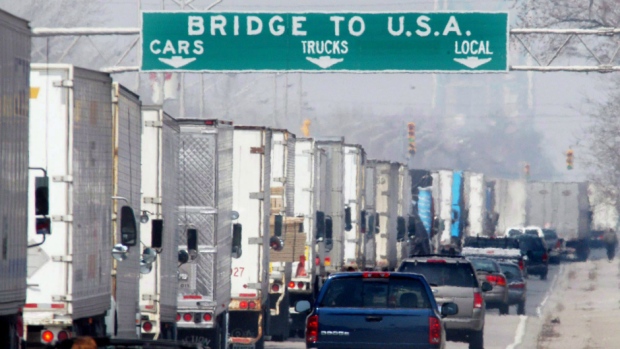Feb 3, 2017
Should Canada be worried about its trade surplus in wake of Trump?
By Greg Bonnell

Canada’s been on a winning streak when it comes to trading goods with the United States, but it’s the kind of success that’s put several countries in the bad books with President Donald Trump.
The president is taking direct aim at what he calls “unfair trade,” and has put the North American Free Trade Agreement squarely in his sights. In Trump’s estimation, NAFTA has been a disaster for the U.S. — although Mexico is bearing the brunt in that fight.
The Trump administration is also taking aim at China, Japan and Germany, levelling allegations of currency manipulation.
Trump’s central gripe: America’s major trading partners are getting the better end of the deal, selling more to the U.S. than they’re buying. That leaves the U.S. saddled with a trade deficit with those nations.
The release Tuesday of Canada’s merchandise trade numbers for December will put the spotlight on this country’s advantageous trade position. In November, Canada’s goods trade surplus with our southern neighbour widened to $4.2 billion — the largest since June 2015.
In fact, the U.S. had merchandise trade deficits with its top five trading partners in 2015. That annual deficit rang in at $366 billion with China, $153 billion with the European Union, $69 billion with Japan, $58 billion with Mexico, and $15.2 billion with Canada, according to figures from the United States International Trade Commission.
Canada, clearly, is not a chief offender when it comes to uneven trade with the U.S.
Still, it’s a mixed message from Washington on where Canada stands.
"I don't think [Prime Minister Justin Trudeau] should be enormously worried because Canada is held in very high regard," Stephen Schwarzman, one of Trump’s advisors, said in Calgary last month as he attended meetings with Trudeau and his cabinet.
Schwarzman, chairman and CEO of the private equity firm Blackstone Group, went as far to say that Canada-U.S. trade is "very much in balance."
However, comments from White House Press Secretary Sean Spicer — made before inauguration day — have some fearing Canada could get caught up in Trump’s protectionism.
"It's not so much a target at one particular country or one particular industry," Spicer said in early January when asked if Canada could get caught up in a border tax.
While Canada has long enjoyed a goods trade surplus with the United States, perhaps the Trump White House is looking at the bigger picture.
When you combine goods and services trade between the two countries, the United States had a trade surplus of $11.9 billion with Canada in 2015.
When you add services into the equation for America’s other top trade partners, you’re still looking at considerable deficits. In China’s case, the goods and services deficit came in at $336 billion in 2015. With Mexico, it was a $49 billion deficit.

